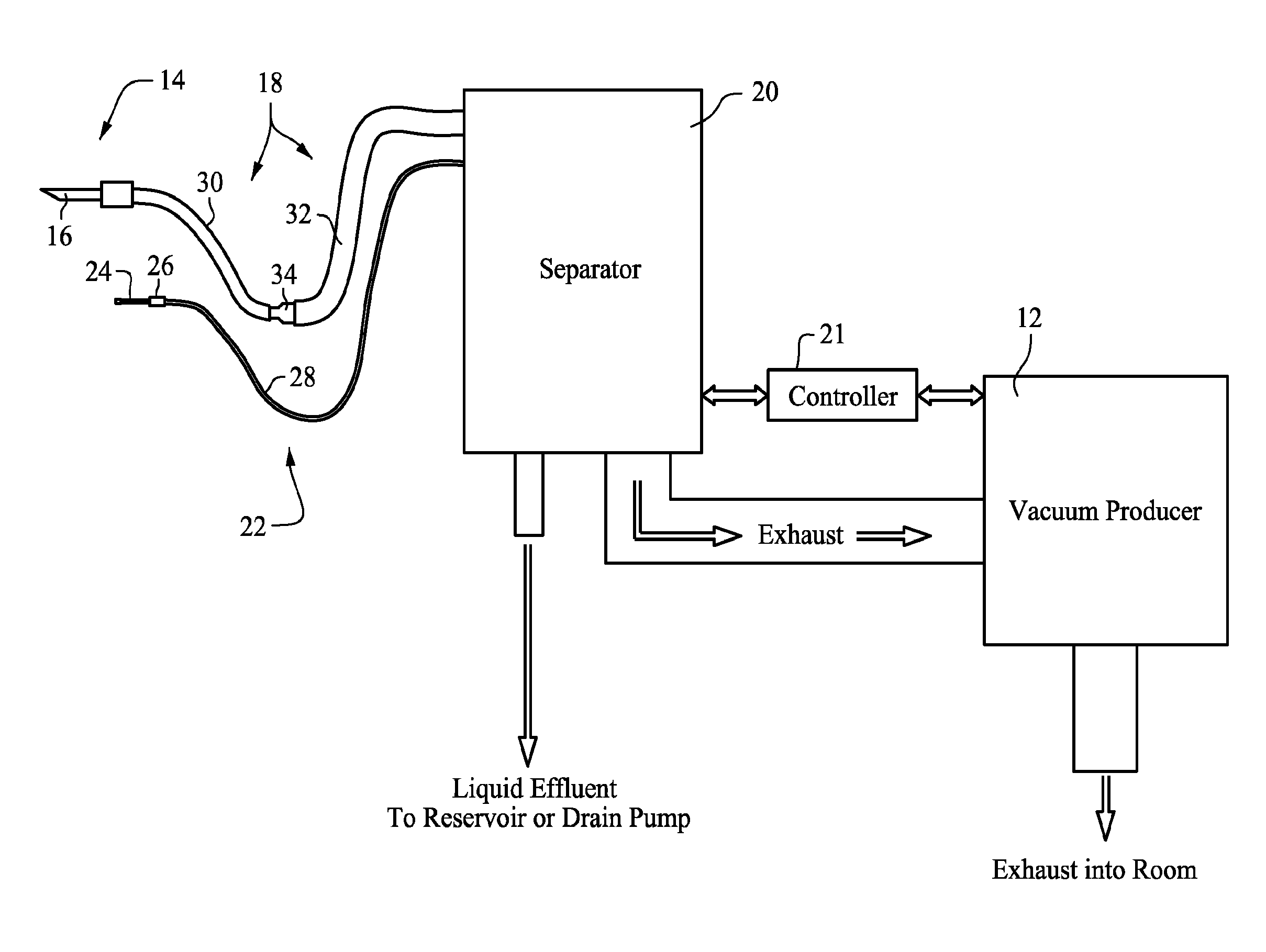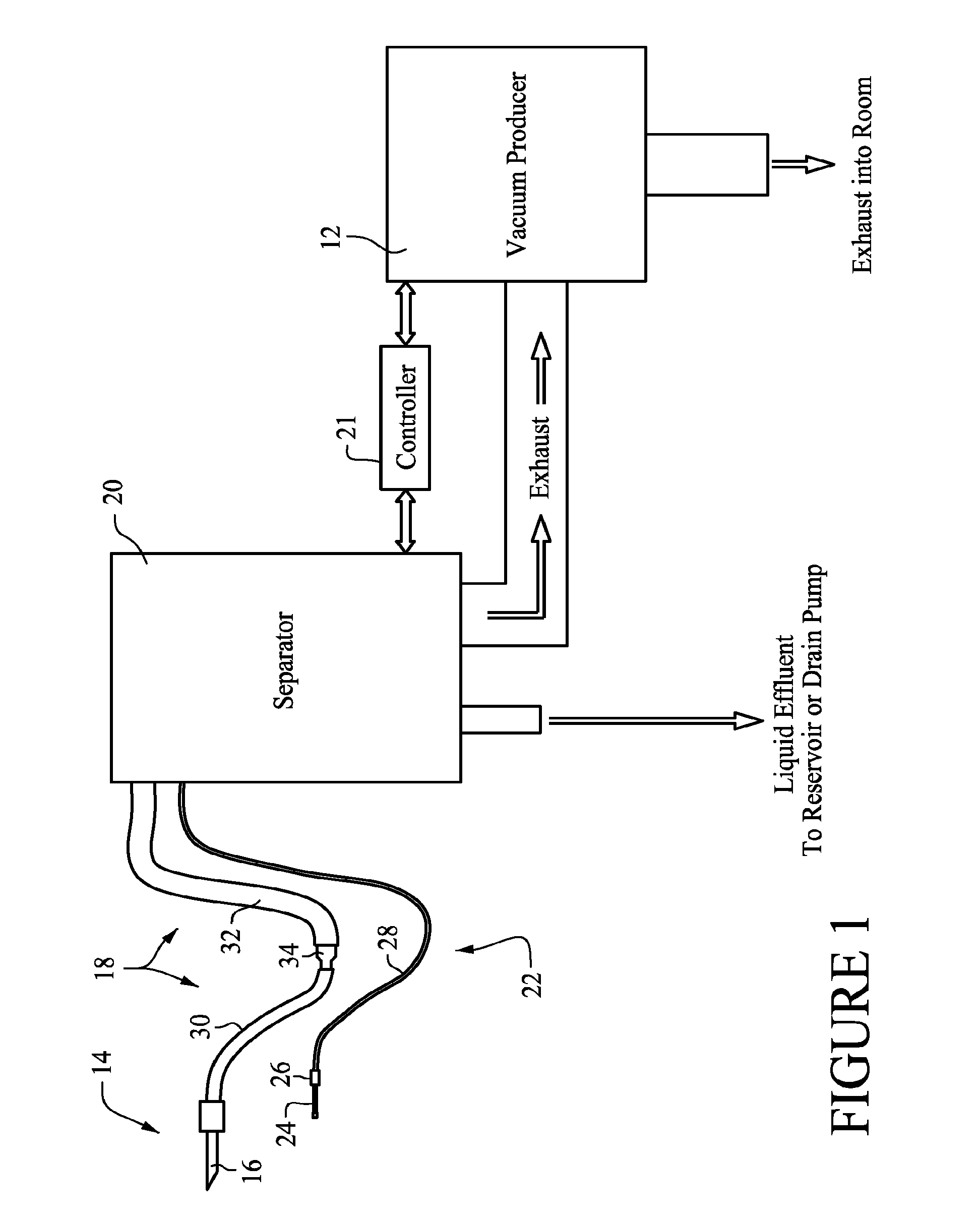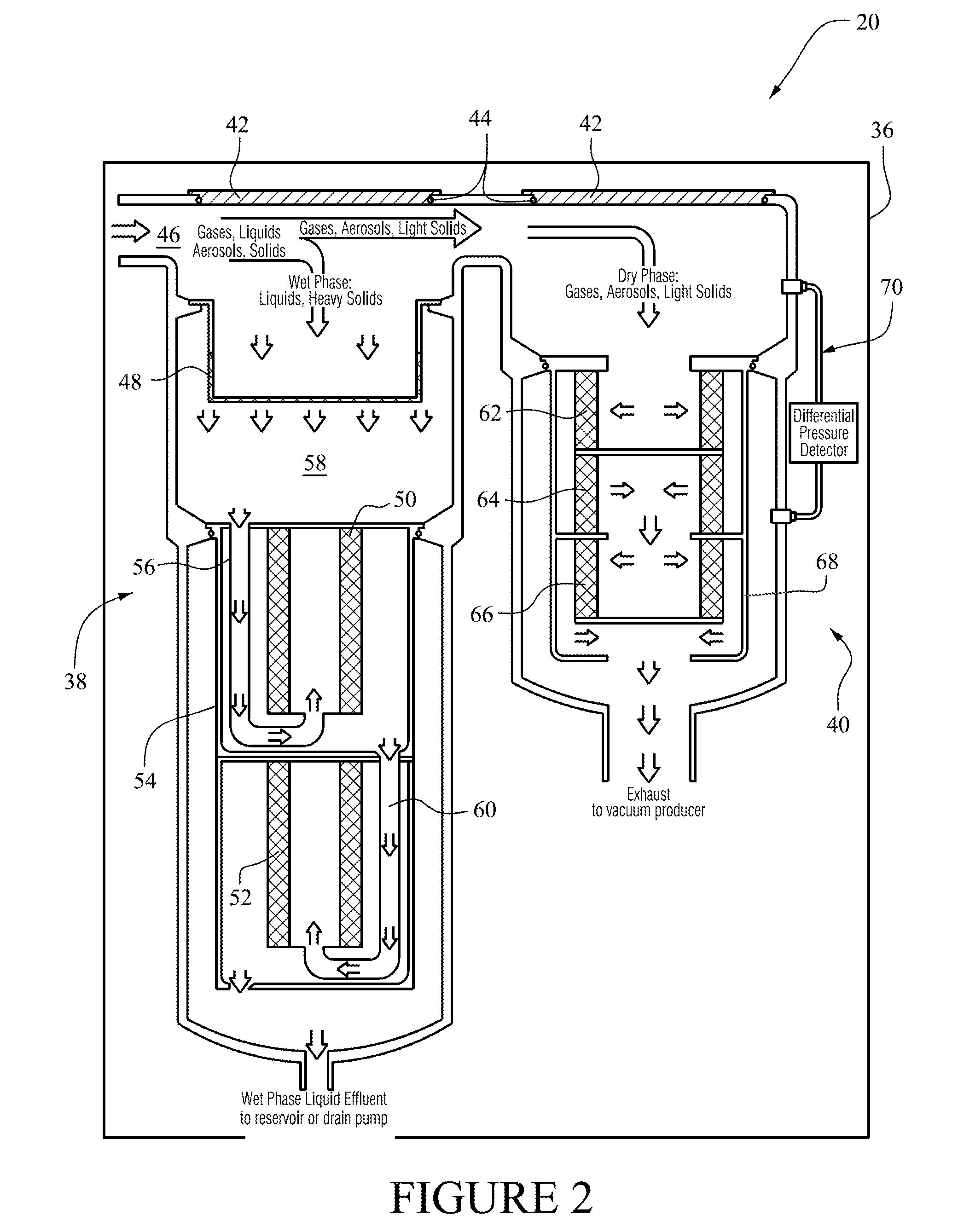Dental vacuum
a vacuum system and dental technology, applied in the field of dental vacuum systems, can solve the problems of short service life, poor flow, and noisy devices
- Summary
- Abstract
- Description
- Claims
- Application Information
AI Technical Summary
Benefits of technology
Problems solved by technology
Method used
Image
Examples
Embodiment Construction
[0022]Unlike the prior central dental vacuum systems, the system of the preferred embodiments is a self-contained system that is constructed for in-treatment room use. A dental practice would thus use the dental system of the described embodiments in each treatment room of its facility.
[0023]FIG. 1 is a schematic diagram of the dental vacuum system. A vacuum producer 12 generates a negative pressure (vacuum pressure) through the system. An operator tool 14 includes an evacuator tip (HVE tip) 16, and a hose assembly 18 connects the operator tool 14 to a separator 20. The separator 20 receives material from the operator tool 14 via the hose assembly 18 and separates the material into wet phase material and dry phase material. A controller 21 is cooperable with the vacuum producer 12 and the separator 20 to control operation of the system components. The system also includes a saliva ejector assembly 22 including a saliva ejector tip 24, a saliva ejector holder 26 and a saliva ejector ...
PUM
 Login to View More
Login to View More Abstract
Description
Claims
Application Information
 Login to View More
Login to View More - R&D
- Intellectual Property
- Life Sciences
- Materials
- Tech Scout
- Unparalleled Data Quality
- Higher Quality Content
- 60% Fewer Hallucinations
Browse by: Latest US Patents, China's latest patents, Technical Efficacy Thesaurus, Application Domain, Technology Topic, Popular Technical Reports.
© 2025 PatSnap. All rights reserved.Legal|Privacy policy|Modern Slavery Act Transparency Statement|Sitemap|About US| Contact US: help@patsnap.com



